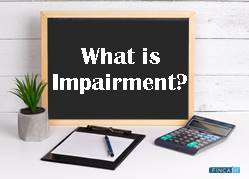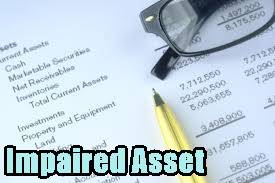
Table of Contents
What is Goodwill Impairment?
As the goodwill's carrying value on financial statements surpasses its Fair Value, the firms declare a goodwill Impairment charge. Goodwill refers to a documented Accounting after a corporation buys assets and liabilities for a higher price than their identifiable net value.

Goodwill is recorded as an asset on a company's Balance Sheet. However, unlike a conventional asset, it does not amortise or depreciate goodwill. Instead, a company's goodwill should be checked for impairment yearly.
If the value of the goodwill asset falls below the acquisition price, the corporation will register goodwill impairment. It indicates that the asset's value has dropped below its worth when the corporation bought it.
As the ability of purchased assets for the generation of cash flows deteriorates and the fair value of the goodwill falls below its Book Value, goodwill impairment occurs.
Working of Goodwill Impairment
Goodwill impairment is a financial charge that corporations record on their Income statements when they find convincing evidence that the asset associated with the goodwill can no longer produce the expected economic outcomes at the time of purchase.
It refers to a type of intangible asset frequently associated with acquiring a company by another. Goodwill is recorded when the buying price exceeds the fair value of all identifiable tangible and intangible assets and liabilities incurred during the acquisition process.
Goodwill can be defined as the worth of a company's brand name, solid client base, good customer relations, good staff relations, and any patents or proprietary technology.
The difference between the fair value of acquired assets and their purchasing price is recorded as goodwill because many corporations purchase other firms and pay a fee that exceeds the fair value of identified assets and liabilities that the acquired firm holds. However, suppose unanticipated events occur that reduce expected cash flows from purchased assets. In that case, the goodwill recorded may have a current fair value that is lower than what was initially booked, and the firm must report goodwill impairment.
Testing if Goodwill Impairment is Required
Impairment tests must be performed annually or whenever a triggering event occurs that causes the Fair Market Value of a goodwill asset to fall below its carrying value. Adverse changes in the Economy's general condition, an increasingly competitive environment, legal implications, changes in key personnel, declining cash flows, and a situation where current assets show a pattern of declining Market value are some of the triggering events that may result in impairment.
There are two typical approaches for determining whether or not goodwill has been harmed:
- The income technique is used to discount predicted future cash flows to their present value.
- The market method involves examining and comparing the assets and liabilities of companies in the same Industry.
Talk to our investment specialist
Goodwill Impairment Examples
The impact of goodwill impairment on the balance sheet, income statement, and cash flow statement is shown below.
Firm BB pays 15 million INR for the assets of company CC, valuing its assets at 10 million INR and recording 5 million INR in goodwill on its balance sheet. After a year, company BB does an asset impairment test and discovers that company CC's revenue has steadily fallen. As a result, the current value of firm CC's assets has reduced from 10 million INR to 7 million INR, resulting in a 3 million INR asset impairment. This reduces the value of the goodwill asset from 5 million INR to 2 million INR.
- Goodwill is reduced from 5 million INR to 2 million INR on the balance sheet.
- Impact on the income statement: A 3 million INR impairment charge is recorded, resulting in a 3 million INR reduction in net Earnings.
- The impairment charge is a non-cash item reclassified as cash from operations on the Cash Flow Statement. The only change in cash flow would be a tax impact, which is unlikely because impairments are often not tax-Deductible.
All efforts have been made to ensure the information provided here is accurate. However, no guarantees are made regarding correctness of data. Please verify with scheme information document before making any investment.








